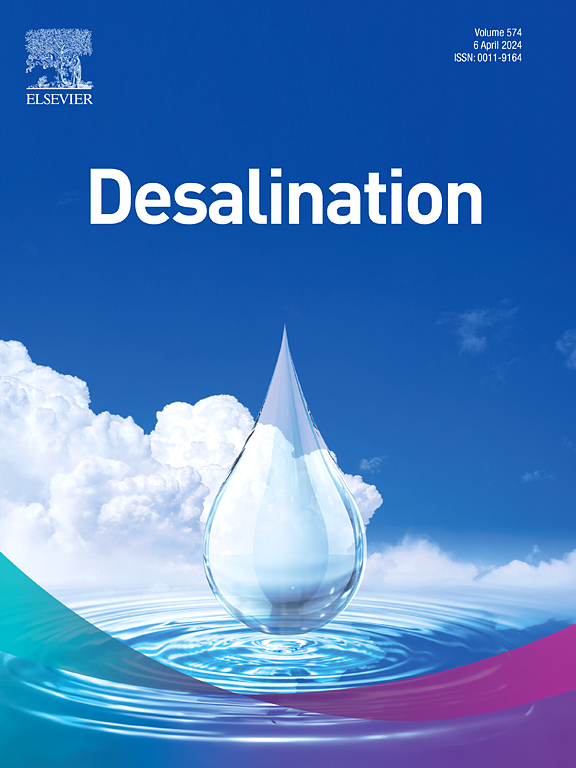Enhanced inhibition of calcium phosphate scale by polyaspartic acid modified with sulfur-nitrogen co-doped carbon quantum dots
IF 8.3
1区 工程技术
Q1 ENGINEERING, CHEMICAL
引用次数: 0
Abstract
In this study, a novel hybrid scale inhibitor, sulfur‑nitrogen co-doped carbon quantum dots modified polyaspartic acid (SN-CDs/PASP), was developed to mitigate calcium phosphate (Ca![]() P), an area that remains largely underexplored. The synthesis and properties of the SN-CDs/PASP composite were characterized using Raman, FTIR, XPS, and TEM. Static scale inhibition experiments and electrochemical tests revealed that the composite significantly outperforms pure PASP, achieving a maximum inhibition rate of 98 % at 10 mg/L with an optimized Polysuccinimide (PSI):SN-CDs ratio of 10:1. Unlike traditional scale inhibitors such as phosphonates or ordinary PASP, which lack multifunctionality and exhibit limited specific surface area, the SN-CDs/PASP composite offers increased surface area due to the nanoscale SN-CDs, enhancing ion chelation. Compared to other nanomaterial-based inhibitors, such as common carbon quantum dots, the sulfonic and amino groups from SN-CDs further improve chelation and electrostatic repulsion, disrupting Ca
P), an area that remains largely underexplored. The synthesis and properties of the SN-CDs/PASP composite were characterized using Raman, FTIR, XPS, and TEM. Static scale inhibition experiments and electrochemical tests revealed that the composite significantly outperforms pure PASP, achieving a maximum inhibition rate of 98 % at 10 mg/L with an optimized Polysuccinimide (PSI):SN-CDs ratio of 10:1. Unlike traditional scale inhibitors such as phosphonates or ordinary PASP, which lack multifunctionality and exhibit limited specific surface area, the SN-CDs/PASP composite offers increased surface area due to the nanoscale SN-CDs, enhancing ion chelation. Compared to other nanomaterial-based inhibitors, such as common carbon quantum dots, the sulfonic and amino groups from SN-CDs further improve chelation and electrostatic repulsion, disrupting Ca![]() P crystal formation. Additionally, its fluorescence intensity correlates linearly with concentration, enabling real-time dosage monitoring—a feature absent in conventional inhibitors. This environmentally friendly composite provides new insights into advanced, high-efficiency scale inhibition for industrial applications.
P crystal formation. Additionally, its fluorescence intensity correlates linearly with concentration, enabling real-time dosage monitoring—a feature absent in conventional inhibitors. This environmentally friendly composite provides new insights into advanced, high-efficiency scale inhibition for industrial applications.
求助全文
约1分钟内获得全文
求助全文
来源期刊

Desalination
工程技术-工程:化工
CiteScore
14.60
自引率
20.20%
发文量
619
审稿时长
41 days
期刊介绍:
Desalination is a scholarly journal that focuses on the field of desalination materials, processes, and associated technologies. It encompasses a wide range of disciplines and aims to publish exceptional papers in this area.
The journal invites submissions that explicitly revolve around water desalting and its applications to various sources such as seawater, groundwater, and wastewater. It particularly encourages research on diverse desalination methods including thermal, membrane, sorption, and hybrid processes.
By providing a platform for innovative studies, Desalination aims to advance the understanding and development of desalination technologies, promoting sustainable solutions for water scarcity challenges.
 求助内容:
求助内容: 应助结果提醒方式:
应助结果提醒方式:


